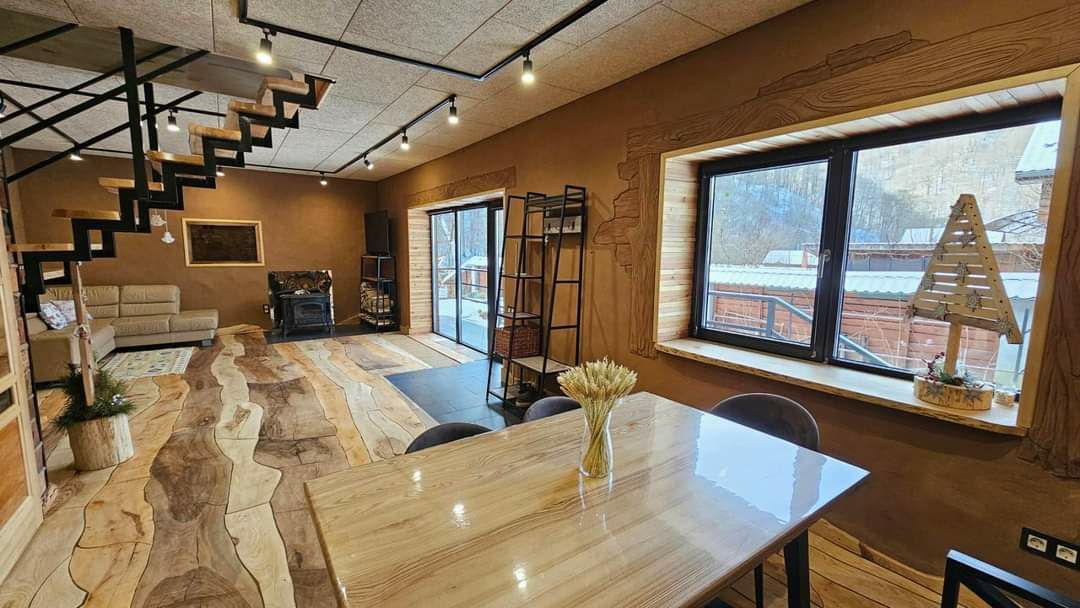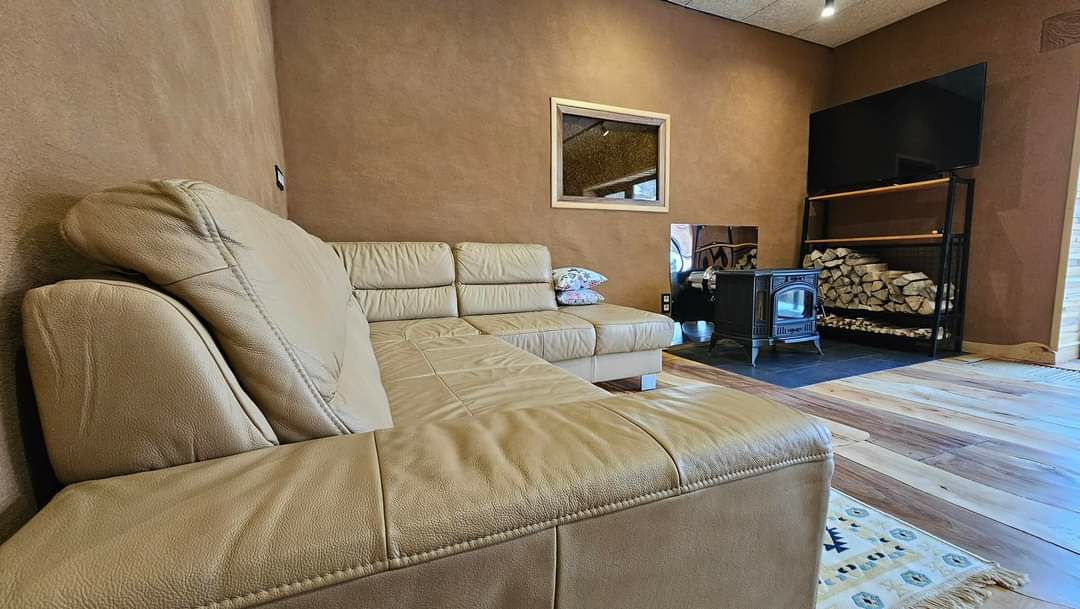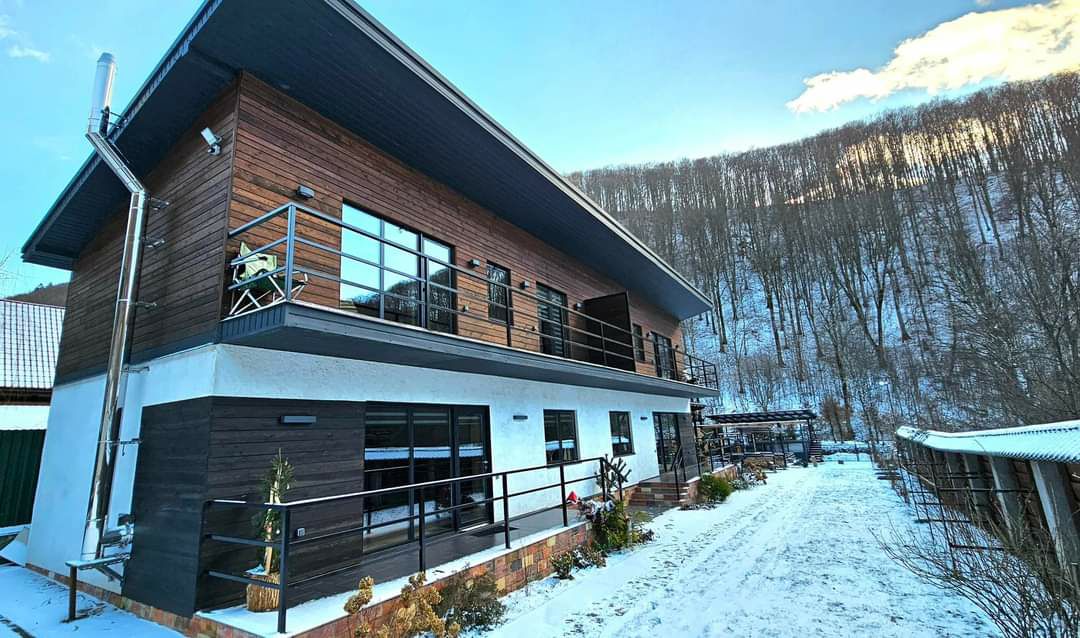Factory production of house components optimizes construction timelines, prevents errors, and allows quality verification against project drawings. Straw panel homes are suitable for all soil types due to significantly reduced weight and allow construction of up to three floors.
In most cases, shallow strip foundations (400x400mm) with concrete piles are used. For plots with steep slopes, galvanized screw piles may be employed. This significantly reduces foundation costs. The thermal insulation of straw house walls equals 7 meters of brick walls, while 56 dB soundproofing allows for building recording studios. Thanks to these properties of straw panels, heating and cooling costs decrease by 70%, and external noise levels don't interfere with home comfort.

Interior of a completed straw panel home. Advantages. Straw is a natural material with a capsule structure that maintains its shape and properties when compressed. Straw panels act like microfilters, enabling continuous vapor and air exchange. This results in oxygen-rich air inside straw homes, with dew points located in the external facade layer. Walls remain warm in winter and pleasant to touch.
Densely compressed rye straw panels, containing high silica content, create inhospitable conditions for rodents. Based on construction experience, owners of our factory's straw panel homes report no pest issues. Additional protection measures include pest-control nets or planting repellent plants around the house (mint, lemon balm, bog myrtle, medicinal comfrey, chamomile, white melilot, etc.).

Traditional interior finishing in straw homes uses clay plaster. This hypoallergenic material is applied in layers up to 4cm thick, available in any texture and color. Clay plaster effectively preserves straw, protects against fire, regulates indoor humidity, and provides natural cooling in heat. Particularly noticeable in summer when outdoor temperatures exceed 37°C, while indoor temperatures remain at 28-29°C without air conditioning.
Straw panels are compressed under high pressure, leaving insufficient oxygen to sustain combustion or rapid fire spread. Under temperature stress, clay plaster transforms into clay-ceramic. This resistance allows straw panel walls to withstand temperatures up to 1000°C for several hours. Straw homes are designed for long-term use exceeding 100 years, withstand earthquakes up to 9 on the Richter scale, and have no material shrinkage or climate restrictions.






